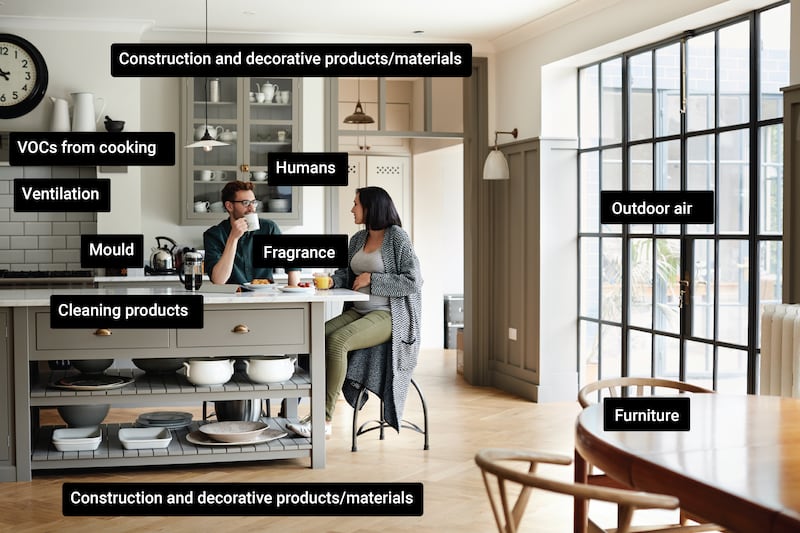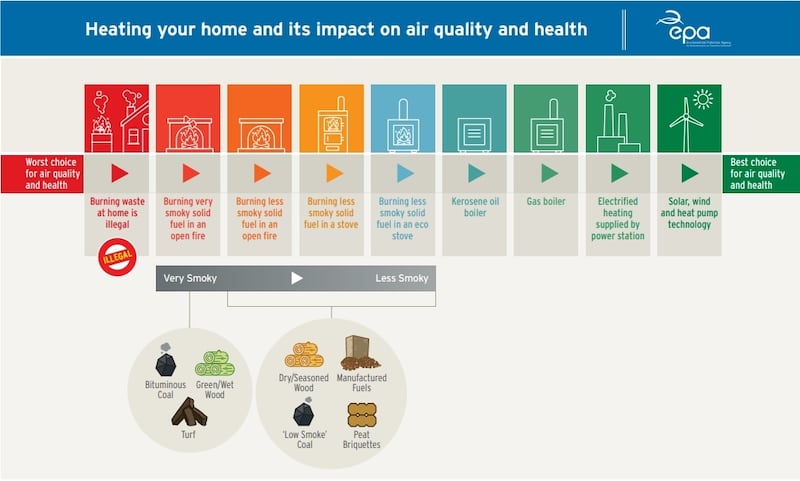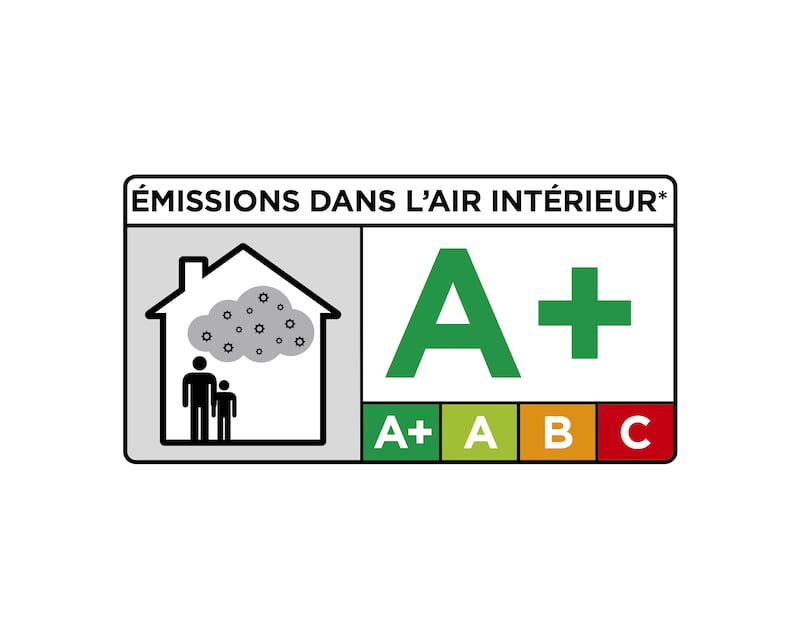Every time you visit the supermarket, you see people browsing the aisles, reading the ingredients on product labels before making the decision to either buy something or return it to the shelf.
Most of us like to think we have some knowledge of what ultra-processed foods are, and the various ways sugar is secreted into shop-bought goods. We are what we eat, because, in general, we have an idea of what we’re eating.
Air quality is as critical to good health as nutritious food. With most of us spending the majority of our time in buildings, indoor air quality, in the home and at work, is an important concern.
In a sustainability era, how can we review our homes for existing pollutants in the same way we appraise our food purchases? And, where we find evidence of indoor air pollutants, what can we do to remedy or remove them?
Paul Howard: I said I’d never love another dog as much as I loved Humphrey. I was wrong
Gladiator II review: Don’t blame Paul Mescal but there’s no good reason for this jumbled sequel to exist
We had sex maybe once a month. The constant rejection was soul-crushing, it felt like my ex didn’t even like me
Reducing it at source is crucial, says Dr Ana Maria Scutaru, a scientist specialising in indoor air hygiene at Germany’s Federal Environment Agency, based in Dessau-Roßlau, south of Berlin.
“There are many different types of pollutants in our indoor air,” she says.

Types of pollutants
Formaldehyde, for example, is not just used in funeral parlours. In the construction industry, it can be found in some foam-based wall and ceiling insulations, wood-based panels, laminate flooring and wallpapers. It can also be produced as a result of cooking, smoking and the use of some candles and ethanol fireplaces.
“Formaldehyde is one of the most known pollutants, but there are thousands of volatile organic compounds [VOCs],” says Scutaru. “These are emitted by construction products, furniture, decoration products, cleaning products, all those that smell while you clean.”
According to the World Health Organisation’s (WHO) guidelines for indoor air quality, in the home pollutants can be found in varnishes and protective coatings on flooring and on laminates, in some resins that bond and coat man-made kitchen countertops, and in glues, so you may also encounter it in bathroom sealants.
The kitchen hob, if it uses gas, may emit nitrogen dioxide (NO2) while poorly vented fuel-burning appliances, such as a wood-burning or other solid-fuel stoves can emit poisonous carbon monoxide.
[ Indoor air pollution: Why our homes and offices need a health checkOpens in new window ]
The WHO report notes there may also be particulate matter found in the home, generated from solid-fuel combustion such as oil or kerosene, coal or wood and in outdoor air, which also contains NO2 from traffic pollution, petrol and diesel vehicle exhausts.
Your heating choices will also impact indoor air quality. The Environmental Protection Agency has created a chart of worst to best heating choices for indoor air quality: the worst is identified as burning waste illegally, followed by burning “very smoky solid fuel” such as turf and coal; solar, wind and heat-pump technology options are deemed the best options for air quality, preceded by electrified heating supplied by a power plant and a gas boiler; while the burning of “less smoky solid fuel”, such as dry wood and peat briquettes, occupy the centre of the chart. (See below.)

How do you mitigate against indoor air pollution?
Ventilation is considered one simple way to dispel these pollutants.
In a temperate climate such as ours, the thinking is that we can and should open our windows. But outdoor air quality is also under question.
Heritage architect Dermot Brennan believes that as insulation levels in homes are improved, mechanical ventilation is the way forward. It’s counsel he has been giving to private clients for more than 20 years.
In traditionally built homes every room was vented, he says. “Indoor air quality, however, became a problem in the 1970s with the advent of new, non-permeable building materials, double glazing and the increase of central heating. Existing vents were blocked up to maintain warmth. The indoor air was getting heated and couldn’t leave. This caused condensation issues, mould and air quality health issues,” says Brennan.
Mechanical heat-recovery ventilation will help circulate air, control moisture levels and remove pollutants, he says.
Costs for such systems vary, depending on the size of the property, but he estimates it to be about €5,000 to €6,000 excluding installation, for a three- to four-bedroom house of between 116sq m (1,250sq ft) and 139sq m (1,500sq ft). Brennan recommends this measure when doing a thermal retrofit on homes that are more than 15 years old. “It’s a system usually installed in the attic of a property, removing moist air from bathrooms and delivering air heated by heat-transfer to the main rooms. The background level of noise is very low,” he says.
Building regulations do mention VOCs, but do not yet include maximum values for pollutants. This is something the Irish Green Building Council (IGBC) is trying to address as part of the Home Performance Index Certification Scheme – Ireland’s national certification for new sustainable residential development. But this is just for new-build homes.
Labels
When buying furniture for your home, it’s important to pay attention to what its made from.
By producers flagging which materials contain pollutants, purchasers can make informed decisions. To increase transparency and awareness, such labelling was one of the recommendations of Healthy Homes Ireland, a report published last year by the IGBC and Velux.
An example of such a system is the European Union’s Eco label aims to ensure that products have supply-chain transparency, adhere to a circular-economy practice and are lower in VOCs. It is especially strong on listing cleaning products, textiles and mattresses.
In addition, Germany’s Blauer Engel (blue angel), is an eco label that signposts supply-chain transparency. In operation for more than 45 years, its website allows consumers to search its site by product type or brand.

Meanwhile, France has a compulsory labelling of materials that emit VOCs. It features a rating system from A-plus down to C.
When it comes to indoor air quality, the best way to ensure your buying risk-free products in Ireland is to ask questions about the materials used and the production process. Ask what a piece of furniture is made from and the glues used, and if it has seating, ask if its covering – be it fabric, leather or a vinyl – is made from plastic. For items such as a sofa, you should determine what materials have been used in its cushions; it may have natural wool covers but the cushion padding may be a mix of man-made foam and down feathers. Also ask whether its cover or seating material has been sprayed with a fire-retardant substance.
At home, Scutaru uses water-based paints and cleaning agents with vinegar bases, actively avoiding those products that give off that faux fresh clean smell. “Use your nose,” she says. “If products smell strongly, you may have issues in your home.”
She also minimises the use of fragrances of every description. This includes scented candles, air fresheners and perfume.
Bedrooms
In bedrooms, the textiles on the bed, the fabric and fabric protector on the bed head, even the curtains, carpet and wardrobe, can emit VOCs. Soft furnishings and flooring such as carpets or rugs may also have flame-retardant treatments, which should be considered when making a purchase. Depending on their composition, wardrobes may have some pollutants. If the closet is made of particle board, for example, it may have formaldehyde, Scutaru says.
Bedrooms also tend to have a higher concentration of CO2 levels, she says. We spend up to eight hours a day sleeping, often in what are poorly ventilated spaces. She lives in an old apartment building that has no mechanical ventilation. In summertime, while she would love to keep her bedroom window open, it faces the main street, and the noise levels are too high. Instead, she contents herself with enjoying sea breezes while on holiday by the ocean. Winter in Berlin is too cold to contemplate such practices, she says.
Leaving windows visibly open can create a security issue. If you plan to upgrade your windows in the future, consider investing in a brand that includes trickle vents that will aerate the space while not visibly inviting attention.
How can I find out what my own indoor air quality levels are like?
If you want to assess your own indoor air quality, you can start by measuring your levels with a monitor. Marion Jammet, head of policy and advocacy at the IGBC, is one of the increasing numbers of home dwellers using one. “It is interesting to see how humidity increases during the night in the bedroom,” she says. “It really helps in reminding us to open the window in the morning.” Prices for entry-level models start from about €80.











